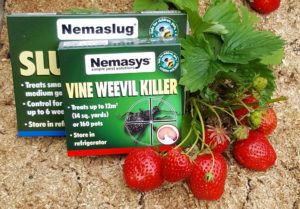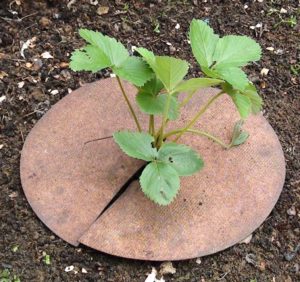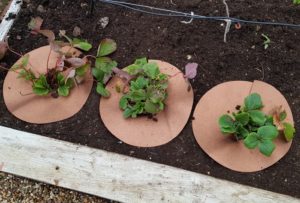20 January 2021
A Guide On Strawberry Runners, Coir Pots, Hanging Bags and controlling Vine Weevils
The weather was so good at the weekend that like many of you I was out in the garden. I have never had success growing strawberries outdoors and last year was no different, so I have decided to try growing them in the greenhouse this year. On digging up the old plants I was delighted to find lots of rooted runners , which I was able to pot up to produce lots of free plants. I had so many, I was also able to plant up a couple of hanging bags, which are ideal for growing strawberries in.
Anybody who has grown strawberries will have noticed the long, leafless stalks with a tiny strawberry plants on the end that each strawberry plant sends out. Each one of these has the potential to be a new plant. I normally just leave them to root on their own, but if necessary you can peg them down to a pot full of compost and they will quickly take root. Once the seedlings are rooted, they can be separated form the main plant and potted on ready for the coming season. It does take a lot of energy from the the plant to produce these runners, so it is a good idea to not harvest runners from plants under 2 years old i.e. just remove them as the appear, but once the plant is big enough you can normally harvest at least 2 or 3 new plants from each strawberry plant. This is a great way top replace old and diseased plants or to expand your strawberry bed.
I allow the runners to root naturally, so once the seedlings are big enough and I am ready to pot them on, I carefully dig up the attached plant and cut the stalk to free it from the main plant. I then use Midi Coir Pots to pot the plants into as they are the ideal size and will allow the strawberry roots to grow through the sides, so once they are ready to be planted out, the plant and the pot is simply planted out.
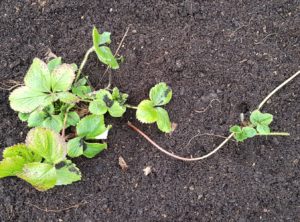
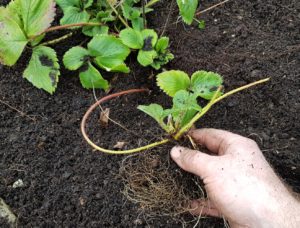
Coir Pots perfect for potting strawberries into. They are the PEAT FREE way of getting your seeds / cuttings off to the best start or for potting on seedlings. Being peat-free they are better for the environment and your plants. Coir Pots are also easier to use (no more clearing up plastic / polystyrene pots, because the pots simply rot down in the soil after use) and produce healthier, faster growing plants. Available in 3 different sizes.
These Coir Pots are available in 3 different sizes, which makes them ideal for sowing seeds in or for rooting cuttings or for potting on. These Coir Pots start off just like plastic pots, but the roots grow through the sides of the pot ready for potting or planting out – no root disturbance for the plant and no plastic pots for you to throw away. Pictured right – a tomato plant has been sown into a coir pellet and then raised in coir pots before being planted (pot and all!) directly into the grow bag – you simply pop the plant & the pot into the planting hole. Its quick and easy and good for the plants and for the environment. Made from renewable resources and biodegradable. Available in 3 sizes :-
Mini Coir Pots – 8 cm x 5.5cm depth – 0.2 lt. Pefect for seeds, cuttings or for pricking out seedlings into.
Midi Coir Pots – 10.75 cm x 8.5cm depth – 0.6 lt. Perfect for potting on before planting out.
Maxi Coir Pots – 16 cm x 17cm depth – 3.8 lt. Pefect for potting on or for raising larger plants i.e. tomatoes and cucumbers.
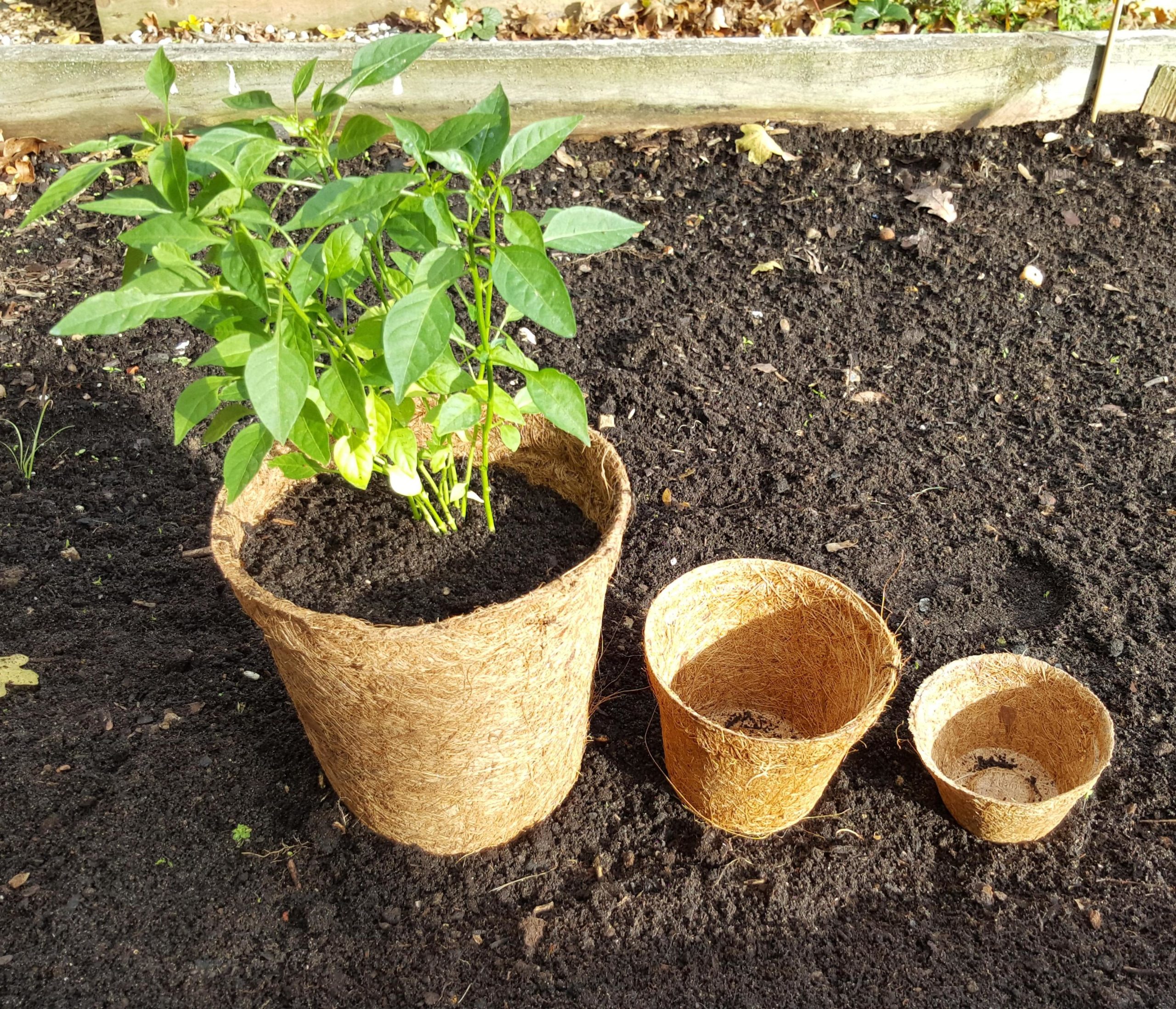
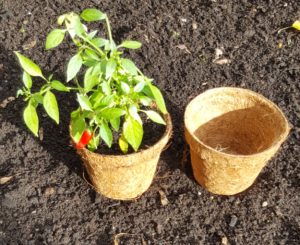
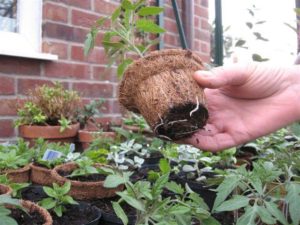
With plenty of strawberry seedling left, I was able to plant up a couple of Hessian Hanging Bags as well. Hessian Hanging Flower Bags are made from hessian, which is biodegradable and much more attractive than the plastic versions and are great for creating colourful all year round displays. Hanging bags are much easier to prepare and look after than hanging baskets as they require much less water and feed. The bag will last at least 2 seasons and much longer if emptied and stored dry when not in use. Fill the bags with compost and then either use the pre-cut holes to insert the plants through or cut your own. Once the bags are planted, water them and then lay them flay for 2 weeks to allow the roots to establish before hanging the bags up.
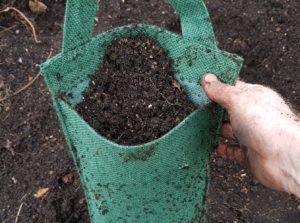
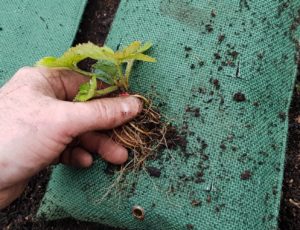
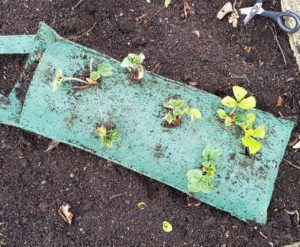
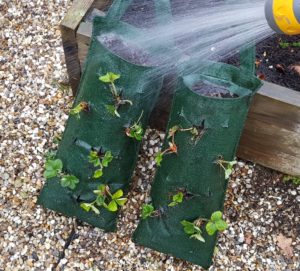
Many of our other products are useful to the strawberry grower – slugs and vine weevils can cause lots of damage, so Nemaslug Slug Killer and Nemasys Vine Weevil Killer are very popular. Both Nemaslug Slug Killer and Nemasys Vine Weevil Killer are safe to use on edible plants, so they are ideal for controlling these troublesome pests on strawberries. We also have Strawberry Mulch Mats, which are impregnated with copper, so when used as a mulch fabric around strawberries they will suppress weeds PLUS slugs and snail hate the copper and are repelled as well. So weed, slug and snail protection in one easy to use product! Simply place the pre-cut discs around the plants and they will suppress weeds and repel slug and snails. But, they will allow water, nutrients and air through. They will last for several years, so simply leave in place for on-going weed, slug and snail protection.
